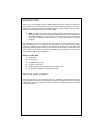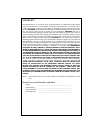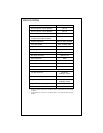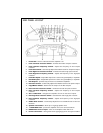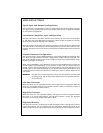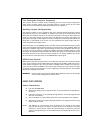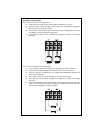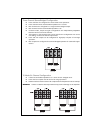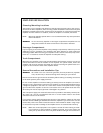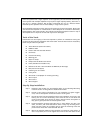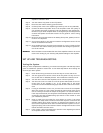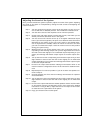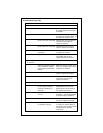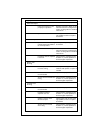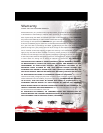
Power for systems with a single amplifier can be supplied by most automotive electrical sys-
tems. Systems with multiple amplifiers may require a higher capacity battery, alternator or
the use of a storage capacitor. We strongly recommend the use of a Directed Audio
Essentials power capacitor with an extra battery in larger stereo systems.
Orion amplifiers generate a certain amount of heat as part of normal operation. Be sure the
area around the amplifier is unobstructed to allow adequate air circulation. Remember,
beach blankets, last week's laundry, school books and homework papers located on top of
the amplifier do not improve air flow and may become damaged.
Tools of the Trade
Listed below are the majority of the tools required to perform an installation. Having the
proper tools will make the installation that much easier. Some of these tools are necessities;
some will just make the job easier.
● Allen Wrenches (2.5mm and 3mm)
● DMM or VOM
● Electric drill with assorted drill bits
● Grommets
● Heat shrink tubing
● Marking pen
● Nylon tie straps
● Phillips and flat blade screw drivers
● Pliers (standard and needle nose)
● Reference CD with 1 kHz Sine Wave at 0dB level (all bits high)
● RTA (real time analyzer)
● Soldering iron and solder
● Utility knife
● Wire brush or sandpaper for chassis grounding
● Wire crimper
● Wire cutters
● Wire strippers
Step By Step Installation
Step 1 Determine the location for the amplifier. Refer to the Choosing Mounting
Locations section of this guide for detailed information.
Step 2 Decide on the system configuration for your amplifier. For system sugges-
tions, refer to the Speaker Connections section of this guide.
Step 3 Run all the wires from the amplifier location to the speakers, source unit, and
battery. Do not connect the battery at this time. Be sure to run RCAs and
power and speaker wires away from factory electrical wires and system as
they pose a great potential for induced system noise.
Step 4 Pre-drill amplifier mounting holes. Be sure to "think before you drill". Gas
tanks, fuel lines, and other obstructions have a nasty way of hiding them-
selves. For best results use a marking pen to mark the mounting holes and
pre-drill these holes with a standard 1/8" drill bit.
Step 5 Mount the amplifier. Make sure the amplifier is mounted on a flat surface. If
this is not possible, do not over tighten the screws so that the chassis of the
11
©2003 Directed Electronics, Inc.



